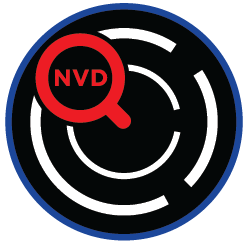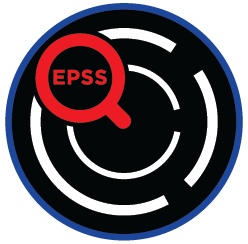

DarCache eXploit: Unveiling Real-World Exploitability for Enhanced Security
Actionable Insight: Bridging Vulnerability Knowledge with Real-World Attack Methods
The Proof-of-Concept (PoC) Exploit Intelligence Repository (DarCache eXploit) is a crucial component of ThreatNG's DarCache Vulnerability, a cornerstone of its all-in-one external attack surface management, digital risk protection, and security ratings solution. DarCache eXploit provides direct links to verified PoC exploit code, enabling security professionals to understand how vulnerabilities can be weaponized in the real world. By directly linking to the repositories and providing a clear description of each exploit alongside its CVE identifier, DarCache eXploit accelerates the understanding of vulnerability impact. This allows security teams to reproduce vulnerabilities, assess their real-world effect on their specific environment, and develop effective mitigation strategies, strengthening ThreatNG's ability to provide a comprehensive and proactive approach to managing external risks.

Real-World Exploit Insights: Accelerating Defense and Informing Strategy
Accelerated and Targeted Remediation
DarCache eXploit provides direct access to verified exploit code, allowing security teams to reproduce vulnerabilities and quickly understand the exact attack techniques. This accelerates the validation of exposed assets and enables the development and deployment of highly effective, targeted mitigation strategies, streamlining the patching and remediation process across the entire digital footprint.
Enhanced Real-World Threat Insight and Proactive Defense
DarCache eXploit offers unparalleled real-world threat insight by revealing how vulnerabilities can be exploited. This empowers organizations to proactively strengthen their security posture from an attacker's perspective, improving incident response capabilities by understanding attack techniques and providing objective evidence for the effectiveness of security controls.
Data-Driven Decision Making and Objective Risk Communication
Accessing and examining concrete PoC exploit code provides a strong, objective basis for data-driven decisions regarding security investments, risk management strategies, and due diligence. This tangible evidence of exploitability enhances communication and collaboration by substantiating risk levels and allowing for clearer, more informed discussions about cybersecurity posture with all stakeholders.
Practical Exploit Insights: Strengthening External Defenses and Driving Strategic Action

Accelerated Validation of External Exposure: Direct links to PoC exploits allow security teams to quickly reproduce vulnerabilities found on their external attack surface, such as those identified in web applications or exposed services, to confirm their real-world exploitability. This significantly speeds up the validation process for prioritizing external risks.
Targeted Remediation for Publicly Exposed Assets: Understanding attackers' exact techniques via PoC exploits helps security teams develop highly effective and targeted mitigation strategies for vulnerable components on their external attack surface. This ensures that remediation efforts are precisely aligned with actual attack methods.
Enhanced Security Posture Verification from an Attacker's View: By accessing and examining exploit code, organizations can objectively verify the effectiveness of their security controls and configurations, such as Web Application Firewalls, from the perspective of an external attacker.
Proactive Mitigation of Digital Asset Risks: The ability to access and understand PoC exploits for vulnerabilities related to exposed sensitive data (e.g., code secrets, cloud buckets, compromised credentials) allows organizations to proactively address risks before they are exploited in the wild, safeguarding their digital assets from potential breaches and brand damage.
Improved Incident Response for Digital Risk Events: During an incident, having access to PoC exploits is crucial for understanding the techniques used by attackers, especially if they relate to data leaks, BEC and phishing susceptibility, or brand damage. This aids in rapidly assessing the impact and developing effective response strategies.
Contextualized Threat Intelligence for Digital Footprint: DarCache eXploit provides practical context for digital risk intelligence by showing how discovered vulnerabilities in an organization's digital footprint can be exploited. This deeper understanding helps evaluate the actual risk posed by various digital exposures.
Objective Evidence for Rating Justification: Verified PoC exploits linked to vulnerabilities contribute to the credibility and objectivity of ThreatNG's security ratings. It provides concrete evidence of how identified flaws could be leveraged, substantiating the assigned risk levels and impact scores.
Prioritization within Security Rating Recommendations: ThreatNG generates reports and recommendations for improving security ratings, including PoC exploit information, and helps prioritize vulnerabilities that are not only severe but also demonstrably exploitable. This ensures that remediation advice is focused on the most critical and impactful areas.
Balanced View of Security Posture with Attacker Insight: ThreatNG's security ratings offer a more balanced and comprehensive view by combining PoC exploits with other positive security indicators. They show how beneficial security controls can be verified against known exploitation methods and explain the specific security benefits of these positive measures from an external attacker's perspective.

Brand Protection
Direct Insight into Brand-Impacting Exploitation Methods: DarCache eXploit provides direct insight into how vulnerabilities affecting an organization's digital presence (e.g., web applications, mobile apps) can be exploited to cause brand damage. This helps understand the attack vectors that could lead to negative news or reputational harm.
Proactive Mitigation of Brand-Related Vulnerabilities: By understanding the mechanics of a PoC exploit, security teams can develop precise countermeasures to protect brand-associated assets, reducing the likelihood of successful attacks that could lead to "Brand Damage Susceptibility".
Informed Response to Brand-Targeted Threats: If a vulnerability linked to a PoC exploit affects brand-critical assets, the insights gained from DarCache eXploit enable a faster and more informed incident response, helping to minimize the impact of potential brand-damaging cyber incidents.
Cloud & SaaS Exposure Management
Verification of Cloud/SaaS Vulnerability Exploitability: DarCache eXploit allows for the verification of how vulnerabilities in cloud services (AWS, Azure, GCP) and SaaS solutions (e.g., Salesforce, Slack) could be exploited. This provides practical insight into the real-world risks associated with "Cloud and SaaS Exposure".
Targeted Hardening of Cloud/SaaS Configurations: By understanding specific PoC exploit techniques, organizations can implement more precise security configurations and controls within their sanctioned and unsanctioned cloud/SaaS environments to mitigate demonstrably exploitable vulnerabilities.
Enhanced Risk Assessment of Cloud/SaaS Implementations: Reviewing PoC exploits offers a deeper understanding of the inherent risks in specific cloud or SaaS implementations, allowing for a more thorough assessment of their "Cloud and SaaS Exposure" level.
Due Diligence
Practical Assessment of Acquisition Target Vulnerabilities: During merger and acquisition due diligence, DarCache eXploit provides crucial insight into the practical exploitability of vulnerabilities within a target organization's infrastructure. This helps assess potential post-acquisition security liabilities.
Identification of High-Risk, Exploitable Assets: The ability to quickly identify vulnerabilities with corresponding PoC exploits allows due diligence teams to pinpoint the most critical and immediately exploitable assets within a target company, informing risk assessments and integration planning.
Informed Investment and Partnership Decisions: Investors and partners can use the actionable intelligence from DarCache eXploit to make more informed decisions by gaining a realistic understanding of the cyber risks associated with a target organization, particularly those with publicly available exploit methods.
Third-Party Risk Management
Objective Validation of Third-Party Vulnerabilities: When assessing a third-party vendor's attack surface, DarCache eXploit provides a way to objectively validate the exploitability of vulnerabilities found within their technologies or exposed services. This moves beyond vendor self-attestation to concrete evidence.
More Explicit Remediation Guidance for Vendors: ThreatNG can use DarCache eXploit insights to provide vendors with clear guidance and resources for remediation based on actual exploit techniques. This streamlines the patching and mitigation process across the supply chain, enhancing "Supply Chain & Third Party Exposure" management.
Data-Driven Negotiation for Vendor Contracts: Organizations can use the specific exploitability insights from DarCache eXploit to inform discussions and negotiations with third-party vendors, demanding more robust security measures for vulnerabilities that have known PoC exploits.
Proof-of-Concept Exploit Intelligence Repository (DarCache eXploit) FAQ
-
A PoC Exploit Intelligence Repository is a collection of verified code or methods demonstrating how a specific vulnerability can be leveraged to achieve an unintended or malicious outcome. These are not necessarily full-fledged attack tools but examples that prove an exploit's existence and feasibility.
Its general importance stems from several key aspects:
Bridging the Gap between Vulnerability and Attack: While a vulnerability description tells you the flaw, a PoC exploit shows you how that flaw can be actively used. This crucial understanding helps security professionals grasp the real-world implications of a vulnerability.
Facilitating Reproduction and Verification: Security teams can safely use PoC exploits to reproduce vulnerabilities in controlled environments. This allows them to verify the flaws' presence in their systems and confirm the effectiveness of their security controls before an actual attack occurs.
Accelerating Remediation Efforts: By understanding the mechanics of an exploit, security teams can develop more precise and effective mitigation strategies. This saves time and resources compared to generic patching or broad policy changes.
Informing Threat Intelligence: PoC exploits directly indicate active research and potential future attack methodologies. Monitoring these repositories contributes significantly to an organization's overall threat intelligence, allowing them to anticipate and prepare for emerging threats.
Training and Education: PoC exploits serve as valuable tools for training security professionals, helping them understand attack techniques and defensive measures in a practical context.
Its general importance stems from its ability to:
Move Beyond Static Severity: Traditional vulnerability scoring systems (like CVSS, part of NVD ) primarily focus on a vulnerability's inherent severity and technical characteristics. While crucial, severity alone doesn't tell you how likely a vulnerability will be actively exploited. EPSS bridges this gap by providing a probability of real-world exploitation.
Enable Predictive Prioritization: Instead of patching everything, which is often impossible due to resource constraints, EPSS allows organizations to prioritize the most likely weaponized vulnerabilities. This shifts the focus from "what's bad" to "what's bad and likely to be used against us."
Optimize Resource Allocation: By highlighting the vulnerabilities with the highest probability of exploitation, EPSS helps security teams allocate their limited resources more effectively. This ensures that efforts are concentrated on the threats that pose the most significant immediate risk.
Serve as an Early Warning System: High EPSS scores can signal an emerging threat, even before a vulnerability is widely known to be actively exploited. This provides an opportunity for proactive defense.
-
The Proof-of-Concept Exploit Intelligence Repository (DarCache eXploit) is an integral part of ThreatNG's broader DarCache Vulnerability because:
Provides Real-World Context to Vulnerabilities: DarCache eXploit directly links verified Proof-of-Concept (PoC) exploits to known vulnerabilities (CVEs). This significantly accelerates the understanding of how a vulnerability can be exploited. This context is vital when combined with the technical details from NVD and the exploit probability from EPSS, giving a comprehensive view of the threat.
Enhances Prioritization of Remediation: By integrating DarCache eXploit, DarCache Vulnerability helps prioritize remediation efforts on vulnerabilities that are severe and likely to be exploited and have readily available PoC exploits. This indicates a higher likelihood of active exploitation in the wild.
Supports Impact Assessment: Accessing and examining the exploit code allows security teams to reproduce the vulnerability and assess its real-world impact on their specific environment. This information is invaluable for developing effective mitigation strategies.
Validates Security Posture: DarCache eXploit provides objective evidence of the effectiveness of an organization's security controls and configurations from the perspective of an external attacker. This contributes to a more balanced and comprehensive view of an organization's security posture.
-
DarCache eXploit significantly enhances ThreatNG's all-in-one external attack surface management, digital risk protection, and security ratings solution by:
Fueling External Assessment Ratings: ThreatNG's "External Assessment" capabilities, which include ratings like "Web Application Hijack Susceptibility" and "Cyber Risk Exposure," benefit directly from DarCache eXploit. Understanding how vulnerabilities can be exploited helps substantiate these scores by analyzing potential entry points for attackers from the outside world.
Improving Prioritization of External Risks: ThreatNG's ability to perform purely external unauthenticated discovery is more effective when combined with PoC exploit data. This allows for a more precise identification of immediate and significant threats on the external attack surface.
Strengthening Digital Risk Protection: DarCache eXploit provides crucial context for ThreatNG's digital risk intelligence findings, such as "Code Secret Exposure" and "Cloud and SaaS Exposure". Knowing how vulnerabilities in these exposed areas could be exploited helps in proactive mitigation against brand damage or data leaks.
Enhancing Incident Response Capabilities: During an incident, DarCache eXploit makes ThreatNG's detailed investigation modules and intelligence repositories more powerful. Access to PoC exploits is crucial for understanding attackers' techniques, which aids in assessing the impact and developing effective response strategies.
Providing Actionable Insights for Security Ratings: ThreatNG's "Security Ratings" are designed to offer practical advice and guidance on reducing risk. The insights from DarCache eXploit contribute directly to these recommendations, enabling organizations to take proactive measures to improve their security posture.
Validating Positive Security Indicators: ThreatNG identifies and highlights an organization's security strengths, such as Web Application Firewalls. DarCache eXploit helps validate these positive measures from an external attacker's perspective, providing objective evidence of their effectiveness.
-
Item A PoC Exploit Intelligence Repository like DarCache eXploit is essential for a diverse group of stakeholders:
Security Engineers and Analysts use the GitHub URLs to access and examine the exploit code. This is invaluable for reproducing vulnerabilities, assessing their real-world impact on their specific environment, and developing effective mitigation strategies.
Vulnerability Management Teams: For these teams, PoC exploits provide clear guidance and resources for remediation, helping to streamline the patching and mitigation process. They can prioritize vulnerabilities with known PoC exploits as these pose a more immediate and proven threat.
Penetration Testers and Red Teams: PoC exploits are fundamental tools for these professionals as they provide blueprints for testing an organization's defenses and identifying exploitable weaknesses.
Incident Response Teams: During an active incident or post-incident analysis, understanding known PoC exploits helps these teams quickly identify potential attack vectors and assess the scope of a breach.
Security Researchers: They benefit from a centralized repository of PoC exploits, which can aid in further research, analysis of attack trends, and development of new defensive techniques.
Risk Managers and CISOs: While not directly engaging with the code, they rely on the insights derived from PoC exploits to understand the tangible risk of vulnerabilities. This enables them to make data-driven decisions about security investments, communicate risk effectively, and allocate resources to protect digital assets from proven threats.
Third-Party Risk Managers: When evaluating vendors' security postures, the presence of known PoC exploits for vulnerabilities in their systems highlights a significant and tangible risk, informing due diligence and ongoing vendor risk assessments.

DarCache Dark Web: Data and information gathered from the dark web, a part of the internet not indexed by search engines and can only be accessed using specialized software.
DarCache ESG: Data and information gathered to support the analysis and evaluation of companies and other organizations' Environmental, Social, and Governance performance.
DarCache Ransomware: Data gathered to support the analysis and tracking of ransomware attacks and the threat actors behind them.
DarCache Rupture: A database of usernames, emails, and organizations that have been compromised in data breaches or other security incidents.
DarCache Mobile: Intelligence repository of mobile apps identifying exposed sensitive information such as authentication tokens, API keys, and private keys, helping organizations strengthen their security posture and reduce digital risk.
DarCache Bug Bounty: In-depth insight into worldwide bug bounty initiatives enables organizations to proactively use crowdsourced security research data to discover and address vulnerabilities.
DarCache 8-K: Leverage a unique collection of cybersecurity incident disclosures from publicly traded companies to proactively identify and mitigate threats, enhance your security posture, and gain a competitive edge across your external attack surface, digital risk protection, and security ratings initiatives.
DarCache Bank Identification Numbers (BIN): A database of essential information related to Bank Identification Numbers (BINs) used in financial transactions worldwide.





















